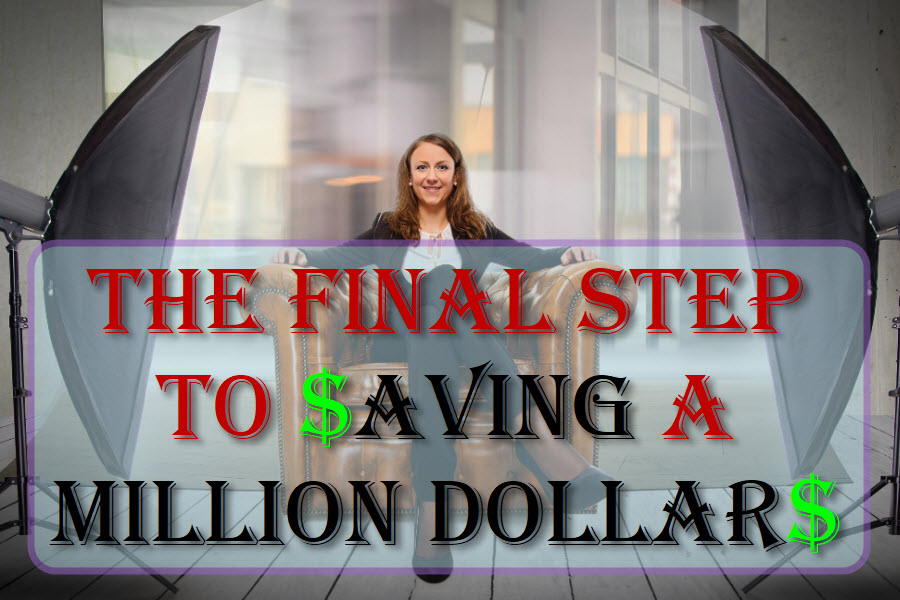
It has been more than a month since I started to compose the first step of this million dollars saving guide. Throughout this process, I had not only reflected and learned from my past financial decisions, I had also done a fair amount of research and incorporated new ideas from other personal finance experts into my future financial plan. By penning (mostly typing) this series, I am not only helping others to succeed by sharing my experience and knowledge, I am also helping myself building a stronger financial foundation. The most important takeaway for me is that I am continually investing in myself. As I mentioned in a Financial Freedom guest post at Mustard Seed Money, “You are one of your greatest assets” and it’s only fitting that you are investing heavily in your greatest asset. I can guarantee you that this investment will always pay you the greatest dividend of all. So without further ado, here are 26 realistic ways that I use to strengthen my assets/investments and save my way to a million dollars. I hope that it can help you as much as it had helped me save a million dollars.
1- Return On Investment
When you invest, one important thing to know is your return on investment (ROI). You need to know what your risk tolerance is in order to set your expected rate of return base on your risk tolerance. For example, if you are very risk-adverse and only want to invest in government bonds, setting an expected rate of return of 7% per annum is not realistic. As I mentioned in the fourth step of this guide, your potential return is correlated to the amount of risk that you take. For my case, ever since I started investing, my investment portfolio is 100% in stocks, so the goal of achieving 10% return per annum is reasonable in my view.

2 – Reinvest Your Gains
This is the same as the compounding concept that I covered in the third step. To grow your money faster, you use the money that you received from dividend-paying stocks to buy more stocks to generate more dividends. Making money on top of the money that you received. This worked very well for me as all the money that I received will be used to further invest. On top of that, I also borrow money to invest and I use my own income to pay for the interests, which forces me to save more.
3 – Reduce Your Cost
When people invest, they often only look at the return on their investment. There is nothing wrong with that, but what should be closely scrutinized is the cost of the investment. For example, if you invest in a mutual fund that has a management expense ratio of 2% per year, which means, regardless of how much money the fund makes, the fund management company takes 2% of your money. Now let’s take a look a similar ETF with a management expense ratio of 0.5%. Over a 40 year period, the mutual fund will be underperforming the ETF by 60% (=[2% – 0.5%] * 40). If you go back to the first table of the third step of this series, instead of having $1M at the end of the 40 year period, you’ll only end up with $400,0000. Essentially, the fund company is making more money for them instead of for you. This is why I choose to manage my own mutual fund – my portfolio.
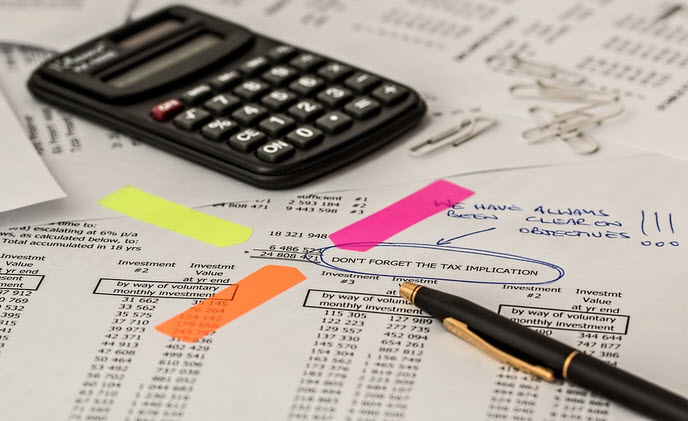
4 – Reading Your Statements
When I first started investing, I had absolutely no knowledge of the foreign income tax laws, not until I received my first dividend payment from a U.S. dividend paying stock. BAM! 30% of my dividend was gone before it even reached my account. Just like that. I was mad beyond exploding like a volcano. How can I just lose 30% of my hard earned dividend? So I talked to my investment broker and found out that the U.S. government just outright robbed me of 30% of my dividend income because I am a foreign investor. My next question was, “Is there anything that I can do to prevent myself from being robbed or lower that amount?” The answer was, “Yes. You can fill out the W-2WEN form and lower that amount from 30% to 15%.” So I complied, filled the form and saved half of my foreign dividend tax. To date, I’ve saved and paid more than $6000 in foreign dividend tax to Uncle Sam (I don’t think he’s my favourite uncle.) and had not had any surprise costs added to my investment account as I learned from that experience. I have been checking all my transactions and investment statements ever since. This is to ensure that my money stays in my account.
5 – Review Your Performance
First, I must admit that one of my favourite past times is conducting my personal financial performance review every quarter of the year. Second, I am a very competitive person in general and I make myself accountable for the performance (or lack of performance) of my investments. The two benchmarks that I used to measure myself are the S&P/TSX Composite index and the S&P 500 index. Since I invest in both the Canadian and U.S. markets, by comparing my performance against these two benchmarks will allow me to assess if it’s worth it to spend all these time and effort. If I can’t beat the market returns, I might as well invest in the ETF index that can provide those returns with a lot less work. Starting from 2008, when I first tracked my own investments, my performance beat the S&P/TSX Composite index and the S&P 500 index, 6 out of 9 years and 5 out of 9 years, respectively. So far, my performance wasn’t that great, but it’s enough for me to continue on this path rather than putting all my financial investments in the two index ETF mentioned in the fifth step of this series. Another performance measurement that I hold myself accountable for is being able to achieve a 10% annual return or better for my investment portfolios. For both my Canadian and U.S. investment portfolios, I was able to achieve a 10% return or better 5 out of 9 years. I hope that I can bump this up to 6 out 9 years for the next cycle.
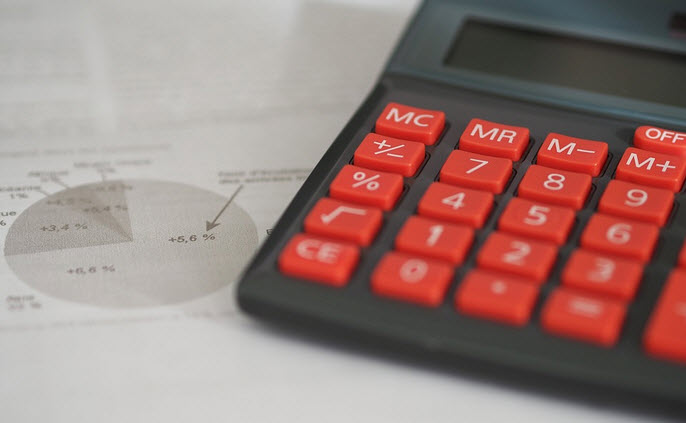
6 – Rebalance Your Portfolio
As time goes by, your investment portfolio will grow or your risk tolerance may change or your investment goals may change or there are underperforming stocks in your portfolio that you need get rid of or there’s a new industry that you want to add to your portfolio. This is a great time to review your portfolio and to rebalance to align it with your investment goals. I normally do it once a year and it’s usually towards the end of the year to maximize the tax efficiency of my investments. I covered this topic in my income tax minimization post a while ago.
7 – Realize Gains and Losses
From time to time, you may need to realize your gains and/or losses. There are a few reasons for doing this. First, if you have a very successful stock pick that doubled or tripled, it may be wise to sell some of it. As the value of that stock may have become a large part of your portfolio and you need to maintain a certain weighting. Secondly, sometimes to avoid paying tax (legally) you can sell some of your loser stocks to offset the gains of your winners or vice versa. Third, if your reason for owning certain stocks no longer applied such as buying a stock for its monthly dividend payment and they stop paying dividends, you should re-evaluate the stock if it’s no longer fitting your goal.

8 – Reach Out To Experts
When people invest, they think that they have to do it by themselves. This is not necessary. You can always reach out to professionals for help or people that you know who are successful investors. It’s all about knowledge. The more expert that you talk to, the more insights you’ll get and you can pick and chose what fits your needs. Honestly, most of the things that I do to invest my money, I didn’t come up with it. I learned from reading investment books, personal finance section of a news website and personal finance blogs. So invest for yourself, not by yourself.
9 – Remove Yourself From Excessive Noise
When I first started investing I have the Business News Network on all the time. I thought it would actually make me a better investor as I was absorbing news story after news story after news story. As it turned out, it was just noise and it actually did more harm than good to my investment strategy. Luckily for me, I but my cable TV and never really noticed that I missed any opportunities.
10 – Risk Management
When I first started to invest in the financial market during the summer of 2008 at the height of the market just before it collapsed, I had little to no risk management skills. I took out a $50,000 home equity loan and opened a margin account at my current investment brokerage. I thought I knew what I was doing and I backed up the truck to load up on stocks when the market was falling precipitously. Little did I know that the more money that I borrowed, the more risk I was taking if the market dropped further. Guess what? The market did drop further until early March of 2009 and I got a couple of margin calls, my brokerage sold my stocks without warning and I had to temporarily borrow money from my Visa card to cover my losses so my brokerage would stop selling my stocks. I almost lost all of my money, was about to call it quits and took the losses. However, I stayed resilient and rode out the tough time. The margin call was a wake-up call for me and it taught me a very valuable lesson in risk management. From that point on, risk management was always at the top of my to-do list no matter what I invest in.

11 – Remember Your Goals
From time to time, I invest in a stock or two that do not align with my financial goals or strategies. These mistakes sometimes cost me a bit of money and throw a monkey wrench or two in my investment path. So I reminded myself to ask these questions every time when I make a new investment purchase, “How is this investment fit into my current goal? What is the benefit of adding this investment? Does this investment strengthen my portfolio in any way?”
12 – Reassess Your Goals
I learned that as I gained more experience (or I am just getting older), my financial goals changes. This is a good thing as my life is constantly changing, so I need to reassess my goal to align it with my needs. You may have accomplished a few easy goals, or have goals that are no longer applicable or you want to add new goals to challenge yourself. Hence, by reassessing your goals periodically (like once a year) will keep you on track towards reaching your financial freedom.
13 – Refine Your Strategy
The world is constantly changing, technologies are often updated, business processes become more efficient, so our investment strategy needs to be refined and adapted to the current and future environment. An investment strategy may be working beautifully for a few years due to government initiatives, may not be an effective strategy when there’s a new government in office. Shall I remind people of how Donald Trump is affecting their view of the world? Since a large portion of my investments is in my taxable brokerage account, I often refine my investment strategy based on how tax efficient the investments are.

14 – Remain Calm
Did you remember the six tumultuous months between September 2008 and March 2009? Those six months were a nightmare for many people as they saw the stock market falling precipitously on a daily basis. If you were in the market back then and stayed in the market, then you have done an excellent job of remaining calm during a period of global financial chaos. If that market tumor did not destroy your wealth, then it had definitely made you a stronger investor. This is the case for me as I remained calm and weathered the worst worldwide financial tsunami had got to offer. Now that I am reflecting back, I can say that I have gained many important and valuable investment lessons and experience. Hopefully, it’ll never happen again in my lifetime. If it does, I have a bigger and stronger truck now and I am definitely going to back up my truck and load up on stocks again.
15 – Relax, It’s A Long Journey
This is a page taken out of Aaron Rodgers’ play book. He’s the laid back quarterback of the Green Bay Packers football team that told his team’s fans to R-E-L-A-X when his team was not performing very well at the start of the 2015 football season.
I think that the same can be applied to investments. When things are not going well, relax, don’t panic, you have to trust yourself to be able to turn things around no matter how grim the situation looks. During the nine years that I invested in the stock market, there were three years that the Canadian market dropped more than 10%. If I panicked during any one of those three years, I would have sold my stocks and lost most of my money.
16 – Recession-Proof Your Portfolio
This is a concept that I learned from Warren Buffett. To recession-proof, your portfolio is to buy boring companies that have very stable sources of revenue regardless of the state of the economy. For example, people will still do their laundry, use electricity, heat their home in the winter and cool their home in the summer regardless of the state of the economy. This is why Warren Buffett has a large portion of his portfolio in Proctor and Gamble, Johnson & Johnson, and a whole bunch of utility companies that have stable sources of revenue in any economic environment.

17 – Rely On Yourself
If you want to earn an income, you must rely on yourself. If you want to save more money, you must rely on yourself. If you want to be a millionaire, you guessed it… You must rely on YOURSELF. The only person that you can always rely on, no matter what the circumstance is, is yourself.
18 – Renew Your Commitment
As I said, the road to saving a million dollars is not going to be fast nor easy. Sometimes you may hit a snag here or there and you may not feel motivated or committed to continuing on. Have no fear, I’ve discovered a way around it. To motivate yourself and renew your commitment to reach your goal of being a millionaire, throw yourself a carrot or two from time to time. I will cover that in the reward section later.
19 – Regroup From Losses
When you invest in the stock market, there will be up years and down years. Based on history, there are more up years than down yours and the long-term trend of the stock market is always up. So what you’ll be experiencing are speed bumps here and there on your investment journey. For me, the three worst investment years were: 2010, 2015 and 2008 where I lost $143,051.19, $99,254.61 and $20,858.43, respectively. The three best investment years were: 2016, 2013 and 2012 where I gained $195,674.05, $88,768.14 and $65,485.03, respectively. To put this into perspective, these are all paper or artificial gains and losses. The value of my investment goes up and down due to the prices of the stocks that I own as I did not sell my stocks when they are down in value.

20 – Research New Opportunities
Opportunity doesn’t come to you on a silver platter. You’d have to find it and take advantage of it. For example, everyone knows about the low-interest rate environment for the last 8 years or so, but how do you take advantage of it? In my case, I borrow as much money as I can because my investment cost of borrowing is about 3.25% over the course of the last 8 years. I was able to buy dividend stocks that pay me a similar return as my borrowing cost, and I let time and compounding do their job to help me grow my money.
21 – Refinance Your Mortgage/loans
By refinancing your mortgage (if you own a home) you can unlock the built up equity in your home and use that equity to work harder to earn your more money as covered in the fifth step of this series. This is dependent on your view of mortgage debt and how comfortable are you at using debt to fund your investments. For me, I am very comfortable at using debt to fund my investments. I started with no investments in 2008 and refinanced my mortgage three times. Each time I refinance, I borrow more and more money (to invest, not for consumption!) Now, I’ve built up a $2M investment portfolio consisting real estate and stocks. You can take a peak of the breakdown in my 2016 year-end performance review.
22 – Resourcefulness
The key to increasing your savings is to be resourceful and increase the number of income sources. I have covered four sources (employment, capital gain, dividends and rental income) already in the previous step of this series. As you guessed it, I already have those four sources of income. On top of that, I also have business income from my real estate business, options income, on-call income where I carry a support phone from my work and work on weekends on a rotational basis on top of my daily duty. In addition, I am hoping that this blog will add another source of income. That gives me a total of eight income sources. Once again, based on Thomas J. Stanley, the average millionaire have on average seven sources of income.
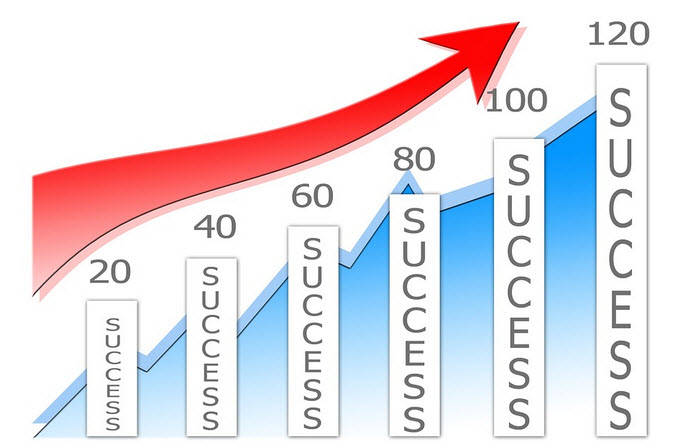
23 – Result Oriented
When it comes to growing your money, you have to be result oriented. By that, I mean you need to know who can deliver the results for your investment returns. If you don’t think that you can do a good job, then it’s time to find professional help to get you the results. On the other hand, if you think the professionals are not delivering the results as you expected, it’s time to take control and achieve the result yourself. For me, I was not satisfied with the results from my financial advisor at my financial institution when I first started investing, so I took matters into my own hands and try to achieve my own results.
24 – Retry, Retry, Retry
When you first started to invest, you may not succeed right away. You may not even make any money or worse – you lose some of your money. That’s okay because failure is defined as First Attempt In Learning (thanks for letting me borrow this awesome line JW from The Green Swan. Based on my nine years of investing, I bought a few stocks that I lost most the money that I invested in those stocks. However, with each loss, I learned from it and I made sure that I don’t make the same mistake twice. If I don’t succeed the first time, I try and retry and retry and retry until I succeeded.
25 – Rinse And Repeat
This is a very simple concept. If what you’re are doing works and you’re making money, then just continue to do it. Sometimes some investments can be boring like investing in an index ETF, but it makes money. When you are successful at doing something, just rinse and repeat.
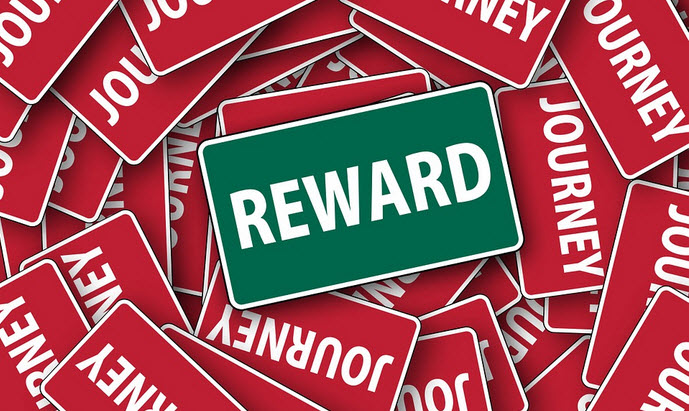
26 – Reward Yourself
When you have success, from time to time, go out and celebrate a little. By rewarding myself for my success, I am actually motivating myself to do even better. Let’s face it, this investment journey is going to be a long journey. By celebrating small milestones that you have reached, you are actually dividing your journey into smaller chunks and it will make it easier to reach your final destination – a million dollars in savings.
My Two Cents
For those aspirating millionaires out there, the most important investment that you can make is to invest in yourself. You are your greatest asset. You are your most reliable option. Your financial success and results are the product of your hard work. Only you can make you a million.
If you have enjoyed this series and would like to join my aspiring millionaire club (you want to become a millionaire don’t you?), take the first step by subscribing to my blog in the subscription form below. I promise that you will only get my money saving tips and nothing else.

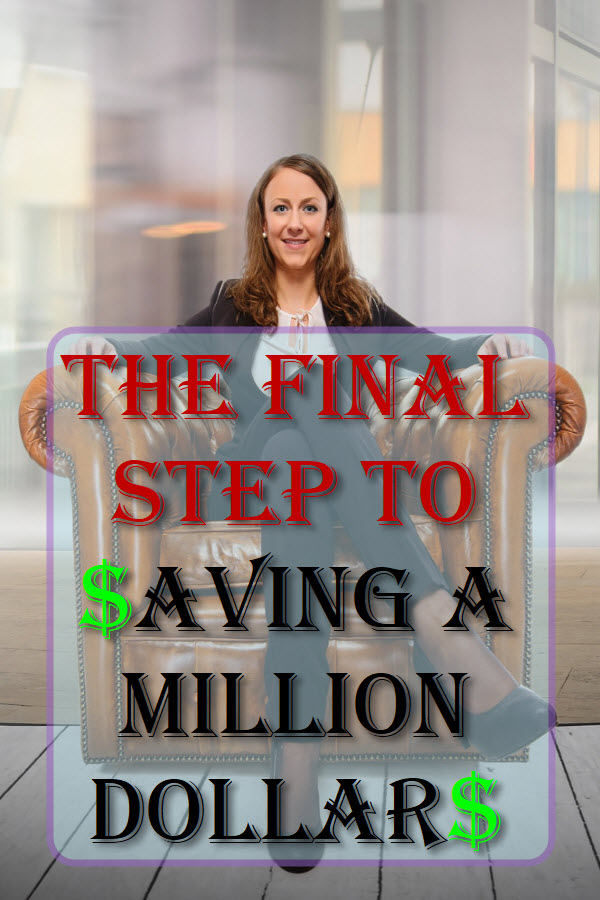
 About Leo
About Leo
You give the same advice that Warren Buffett does. Invest in yourself. You are the best asset that you have. Continue to look for ways to grow and learn and become a better person and provide more value to society. Awesome article as always and I always feel like I take away some great nuggets. Thanks for sharing!!!
@MSM, thanks for such flattering comparison, but I don’t think that I am anywhere near the level that Warren Buffett is at. As always, I just try my best to be a better person and contribute to society. Hopefully, I can inspire a few people to take the first step to manage their finances responsibly.
This is so helpful! My ultimate goal would be to save a million dollars–it would be a dream! I appreciate the time you took to make this post!
@Amber, saving a million dollars doesn’t have to be a dream. All you need to do is start early, save often and invest wisely. Overtime, it’ll be a reality.
This would be amazing if I could save a million dollars! Who wouldn’t want that! Thank you for sharing these tips! I learned a lot and very helpful!
@Kayla, depending on which country and the area of that country that you live in, a million can be a great sum of money or an amount that can’t even buy you a three bedroom house. When you are saving, it starts with one dollar at a time, then tens, then hundreds, then thousands and finally, your million.
You have a lot of information in one article, I think I would have put it in 3, anyway, very good and well thought out process. I don’t know if I want to wait 40 years to get million dollars but I will definitely take some of your advice.
@Lois, Growing your money takes time and discipline. If you want to grow your money faster, there are ways to do that. The first option is to save more each month. The second option is to invest into investment vehicles with higher potential returns, but you’ll also increasing the amount of risks that you are taking.
Great tips! Most important is self control. Some people just a short period save and invest then spend it all.
@Cindyrina, saving for the long term does take a lot of self control and discipline. The successful savers that have accumulated a reasonable amount of wealth, have excellent control of their expenses.
I am agree with you. You are your greatest asset hence its always good to invest in yourself.
@Rane, Investing in yourself should be the number one priority for everyone. This investment will always provide you with a decent return over the long run.
I’ve been loving to read these kind of articles. It makes me focus more on my future- not exactly to be rich or a millinaire but to be finacially stable to provide for my family. Thank you so much for this!
@Mhow, this is the textbook response that I’ve been looking for from my readers and thank you for getting my points. It’s more important to build a stable and secure financial future that allows you to take care of your family. Saving a million dollars is great, but providing a secure financial for your family is better.
Thanks for your advice! I want to save a million dollars one day too!
@Jacqueline, If you put your mind to it, you can do it. You’ll save a million one day by starting to save a few dollars today. Start early.
Great read. Very informative, useful information. Your blog is also easy to navigate, easy to read, well organized. Great use of visuals and placement. I’m interested in your journey.
You made me realize I need to set my expectations higher. I also need more avenues of making an income.
@Madelyn, with higher potential for investment returns it also comes with additional risk. Just make sure that you are comfortable with and fully understand the risk that you are taking. Also for increasing the income streams, it’s never a bad thing to have an extra source of income or two.
@Madelyn Galvez, thanks for the complements. I’ll definite work harder to keep my site simple for my users. I’ll work extra hard to share more interesting posts on my journey to save my second million dollars.
The article is rather lengthy, but worth the minutes you spend on reading it. Investment is a good idea, and how i wish to know this sooner.
@Nora, it’s never too later to start investing. The most difficult part is to get started. So take the plunge and start you journey. It’ll get easier as time pass by.
I always use
Reinvest Your Gains
Reduce Your Cost
as part of my daily saving activities.
This article gave me ideas in improving my savings.
Thanks
@Mauricel, those two items sound similar to compounding you savings with index etf or funds. Those two are definitely the key ingredients to saving a million dollars.
These all seem like powerful strategies, and particularly like the reminder to invest in oneself. This applies outside of finance, as well – you can’t take care of others if you haven’t taken care of yourself. All the same, in keeping with your topic, I will say that I did pick up some new strategies to use in my own investment plans. Thank you!
@Brandi, you are right. Investing in oneself can be applied in any context, not just personal finance. I am happy to hear that post has helped you with your investments. It’s definitely worth it for me to spend the time so share these tips.
Awesome List Leo!!! Thanks for sharing this list, definitely going to share this article with my friends.
@Erik, as always, I am glad to share any tips that I have tried and tested myself. I do appreciate you sharing my post with others. Thank you.
Saving a million dollars seem like such a loooong journey, though it is achievable. Thanks for such an in-depth research and article, I believe that many of us would be able to follow.
@Emily, the journey to a million dollars can be pretty long. However, you don’t have to focus on the destination, you can always make pit stops along the journey to enjoy the scenery. That’s why I put Reward yourself as one of the tips to motivate you once a while to make the journey seems more enjoyable.
So many good points! I like remember your goals and remain calm – two things I am bad at with my quick trigger finger!
@Sara, those are two very important points, especially when the market is tanking. People usually lose sleep or discipline when there is blood in the street. As long as you remember your goals and remain calm, you’ll be fine in your journey to saving a million dollars.
We are in the process of moving things around and trying the new. Thanks for the great tips and a better understanding.
@Cynthia, I am always happy to share my tips and help others get a better grasp with their personal finance. It’s good to hear that your found some useful things to try out.
All good advice. I’m working on my second million dollars now. I’ve given up working on my first million. 🙂
@Richard, It’s good to hear that we are taking the same journey. Please do drop by and share your journey and we’d love to hear your success stories.
My cousin does all these successfully and her husband does all of these perfectly…. and they live a blessed life…
@Miera, financial success can bring you a lot of freedom in life and can give you a lot of choices. This proves that anyone can do it as long as you put in the time to increase your financial knowledge and build your wealth with discipline.
I love most of these points. Even though I do not invest, these are so crucial when it comes to finances and your goals in general. Realizing your gains and losses is key when trying to better yourself and grow. Reassessing and refining your goals is important as well because life is ALWAYS changing and staying current is the best thing that you can do to look towards the future.
@Lauren, these are great points that you have brought up. I couldn’t have said it better myself. I think that you have really hit the nail on the head when you mentioned that life is always changing and you need to reassess your goals so you can look forward to the future. I tend to do that once a year.
Thanks for all the great instructional advice here. There are so many different things that I can learn here about what I want to do with investing.
@David, you’re welcome. It really gives me a sense of satisfaction to hear from my readers that they have learned something new. It really gives me a lot of joy to know that what I post is making a difference in other people’s finances.
Wow, this is such a useful post. I always try to save, but it never works. Going to apply some of these tips. Thanks.
@Kimberly, the secret to become a successful save is to save regularly and invest diligently. Once your saving behaviours become a habit, it’ll definitely work. Be persistent, don’t give up so easily when you first encounter any challenges that you face.
These are great tips. We do most of this. Its amazing what you’ll find in your statements I never used to read.
@Stacey, you are right that reading your statement is very important. If have did not read my statements, I’d never know what happened to 15% of the dividends that I am entitled to. Overtime, that can cost me thousands of dollars.
Again another great tips and sharing! I would consider get someone to help me to process all this! I think I hardly get rest for myself too T_T
@Sharon, it’s definitely a good idea to reach out to professionals for help if finance is not your greatest strength. Just make sure that whoever is managing your finances is a trustworthy person and puts your interest first.
You pulled together all the commonsense financial tips that money managers share with their clients. Good job!
@Elizabeth, to be honest, I do try my best to increase my financial knowledge to be on par with the financial advisors out there. With better knowledge, I can also benefit with my own finances. Win-win for everyone.
These all add up to being able to save more from your income. It’s good to look out for investments out there that will definitely increase the money that you earn every month.
@Carol, based on my last couple of year’s investment result, I can definitely see that the income being generate from my investment is growing every year. I hope that in a few years, it’s large enough that it can replace my full time employment salary, then I’ll have more freedom to pursue my passion in personal finance and real estate.
really love this post. am in the crossroad now and this certainly helps!
@Qian, It’s always great to hear that my posts are resonating with readers. Thanks for dropping by Qian.
Great series Leo! Thanks
@PassiveCanadianIncome, glad that you liked the series and thanks for dropping by.
I totally love this post and I really enjoyed reading this, I would like to spread this as well.
@My Teen Guide, Thank you for sharing my post. It’s great to know that you enjoy this post. These comments are my motivators to write more post like these.
Thanks for all the tips. When trying to save a million dollars, I think it’s very very important to have discipline and self control. You have to always keep your spending habits in check.
@Peachy, discipline and self control are more important to your savings than the amount of money that you make. When you spend less than your income, you’ll always have money to save and grow. However, if you are spending more money than you make, it doesn’t matter how much money you make. You’ll never be able to save any money as you don’t have the self discipline to control your spending.
All the points are sharp! thank you for sharing this, Im going to start my own investment soon
@Abang, your investment starts today. The sooner you start, the better and there is no better to start investing than today.
Good sharing. Thanks.
Most important is self-control and be having a saving habit.
However, like “Investment”, shall be more carefully, do not be greedy.
@Joanne, as Warren Buffett says, “Be greedy when others are fearful. Be fearful when others are greedy.”
Investments are a great way to earn more money without having to work so hard for it. I think it’s important to understand stocks in order for you to properly choose where you’re going to invest your money in. This is so helpful.
@Amanda, this is the exact same thought that I have when I plan to retire by the age of 48. I want my savings to generate enough income for me that I don’t have to be employed to sustain my current lifestyle. Hence, I am always learning new investment ideas and trying to make more money with those new ideas.
Reduce your cost will be difficult for us as goods keep increasing and indirectly we paid more than what we should paid. RM keep shrinking and investment will be a bit risking at here. Anyway, thanks for sharing.
@Betty, there are alternatives to reducing your costs/expenses and you can do that by increasing your income. There is more than one way to solve a problem. Just chose the one that you are most comfortable with.
Omg so much great advice here!!! I would
Love to save a million dollars!
@CourtneyLynne, You can do it. All you have to do is start saving and investing today.
I do agree 🙂 And I think if you have restraint and self control in terms of handling your expenses, you can do really well in saving your cash flow too.
@Shivani, You are right. By decreasing you expenses, you can increase your savings and grow your money that way. In fact, I do know quite a few of my fellow personal finance bloggers who saved more than 50% of their income. It’s quite an amazing feat.
Great article! I actually have wondered what a reasonable rate of return is for stocks. I appreciate that you used specific numbers for return expectations. I’ve heard that index funds can be a good way of getting the average market return over time. For example, I read that the S and P index fund (SPY) typically averages 7%. What are your thoughts?
@Suburban Toolbox, index funds or index ETF are two of the best ways to invest in the market. As for expected returns from the stock market, I don’t think 7% is unreasonable. For the S&P 500, the expected return can range from 7% to 11% compounded annually depending on the period that you choose and the length of the period. For me personally, I think your rate of returned is determined by your discipline rather than index. If you’ll achieve market like returns if you invest regularly with a long term investment horizon.
These are all a great tips I love reading this and so glad that you share this good info. It’s so nice to rebalance gains and looses.
@Angela, I must admit that from time to time, I do enjoy tweaking my portfolio here and there to try to make a bit more money or to pay less taxes by rebalancing my gains and losses.
Wow, wonderful blog layout! How long have you been blogging for? you make blogging look easy. The overall look of your website is great, let alone the content!
I’ve been blogging for about 1/2 a year. Thanks for the complement. I have some IT background and did some content management development myself a long time ago.